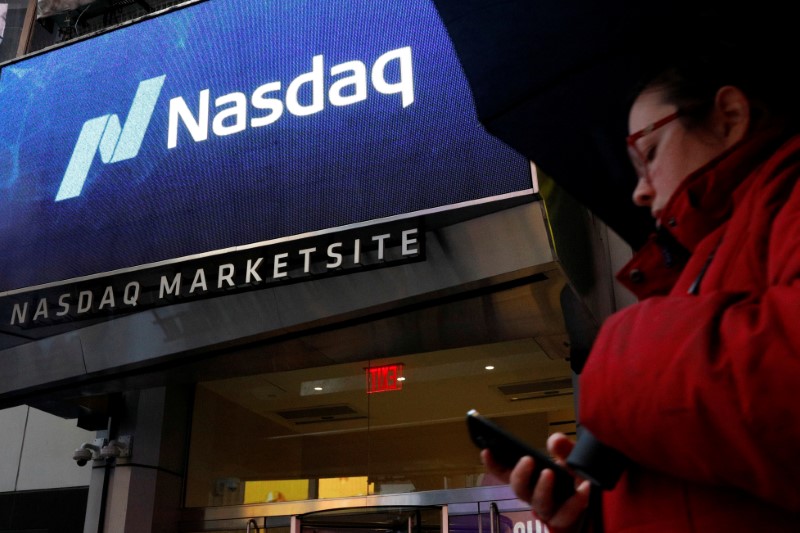
FILE PHOTO: A woman passes by the Nasdaq Market Site in Times Square in New York City, U.S., February 7, 2018. REUTERS/Brendan McDermid/File Photo
August 14, 2018
By John McCrank
NEW YORK (Reuters) – Nasdaq Inc <NDAQ.O> and a Wall Street watchdog will raise fees for private stock trading platforms, such as “dark pools,” that report trade executions to a Nasdaq-run entity, in response to higher operational costs and off-exchange trading volumes, according to a recent regulatory filing.
The fee increases, which kick in Sept. 1, could amount to more than $3.5 million annually and are aimed at non-retail trades reported to a facility run by Nasdaq and the Financial Industry Regulatory Authority (FINRA), the U.S. Securities and Exchange Commission filing said. (https://bit.ly/2P2w98Z)
The higher fees would affect brokers that run dark pools and other types of private trading venues, but could be passed on to investors.
Nearly every major bank runs a dark pool, a trading venue that does not have to provide information such as trade sizes or prices to the public prior to trades taking place.
The trading platforms were originally started with the aim of getting large orders done with minimal price movement, but have also attracted smaller trades because their execution costs are generally cheaper than on exchanges.
Under SEC rules, every stock transaction must be reported to a consolidated data feed, whether it occurs on an exchange, like the Nasdaq or Intercontinental Exchange Inc’s <ICE.N> New York Stock Exchange (NYSE), or in a dark pool. Off-exchange trades are reported through Trade Reporting Facilities (TRFs) run by Nasdaq and NYSE in conjunction with FINRA.
Since 2012, off-exchange trades reported to the FINRA/Nasdaq TRF have risen around 47 percent, while Nasdaq’s operating costs for the facility have risen around 16 percent, the filing said.
FINRA said it analyzed data from 545 FINRA/Nasdaq TRF participants in the final quarter of 2017 and found that if their reporting behavior remained the same, 515 participants would rise around $598 a month on average, though 489 of them would only see an increase of $350. Another 13 retail-focused participants would be unaffected by the fee changes, while the remaining 17 participants would see their monthly fees decrease by an average of $722.
Firms that move more of their trade reporting to the FINRA/Nasdaq TRF could hit new higher fee caps and end up paying less. Alternatively, they could choose to move more reporting to the competing NYSE/FINRA TRF, the filing said.
Nasdaq and FINRA also plan to open a new TRF in Chicago on Sept. 10, Nasdaq said in a separate regulatory filing.
(Reporting by John McCrank; Editing by David Gregorio)

